Opioid Treatment Center in Lancaster
By integrating a holistic, detailed focus on health and well-being, we provide one of the best healing environments for you.
Request a Callback
In the year ending February 2019, there have been 69,029 opioid overdose deaths United States according to SAMHSA public health statistics. This nationwide opioid epidemic has left both emergency departments and primary care doctors overwhelmed. Many people and their families are suffering alone and resist seeking professional help or health care, which for most people caught up in the opioid crisis, is the only way to heal. The good news is that addiction is a treatable disease; with support, education and counseling, you can overcome it and regain control over your future.
Opioid is an umbrella term that describes psychoactive medications and narcotics that are made directly or synthesized from the opium plant. The term opiate refers to drugs that are naturally derived from the poppy plant, such as morphine, heroin and codeine. The term opioid includes these substances, as well as medications including hydrocodone, fentanyl, methadone and oxycodone.
Opioids 101: the basics
What Exactly are Opioids & What Do They Do?
There is a vast range of illicit and prescription opioid drugs. The majority of them have medical uses, and all of them have the potential for addiction. If you use them exactly as directed by your physician, there’s no cause for concern. However, if you’re taking them in higher quantities or more frequently than your prescription states, you’re abusing them and putting yourself at significant risk of developing an opiate use disorder. For anyone who obtains these drugs illegally, the likelihood of addiction is even higher.
Opium
Smoking opium was the original form of opiate abuse. The drug was naturally derived from the poppy, which contains the naturally occurring opiate alkaloids that are extracted and synthesized for the narcotics and medications we use today.
Morphine (Kadian, MS Contin)
Morphine is a painkiller for chronic and acute pain management, and it’s also used for sedation prior to surgical procedures. Many semisynthetic and synthetic opioids are derived from morphine.
Methadone (Methadose, Dolophine)
Methadone is a longer-acting synthetic opioid prescription drug, so it’s used as replacement therapy to help people suffering from opioid addiction. It’s less frequently used as a painkiller.
Hydromorphone (Exalgo, Dilaudid)
While this powerful analgesic is highly useful in a clinical environment, it has a high potential for addiction when abused.
Oxymorphone (Opana)
This intensely strong painkiller is only used to treat severe pain. It’s usually used as a last resort when other treatments have proved to be ineffective. It’s around twice as strong as oxycodone, making it dangerously addictive when misused.
Fentanyl (Duragesic, Lazanda, Abstral, Actiq)
This strong synthetic opioid has been developed to help people with terminal and chronic pain who have become tolerant to pain treatment. Over the last decade or so, it’s become increasingly common for dealers to cut heroin with fentanyl. Many people don’t even realize they’re using it, so they can become fiercely addicted. Its extreme potency also means it can be lethal in much smaller doses than heroin.
Heroin (Diamorphine)
Diamorphine was first used in the 1800s to treat severe pain and as an anesthetic. Today, it’s prohibited in any capacity due to the incredibly high potential for it to cause addiction. It’s traded on the streets in various levels of purity.
Hydrocodone (Vicodin, Lortab, Norco)
Hydrocodone is one of the most prescribed and abused opioids in the US.; it’s also one of the drugs most frequently involved in overdose deaths. As well as being a painkiller, it’s a cough suppressant and is present in some prescription cold medications.
Codeine
Codeine is a relatively common painkiller due to the fact it’s fairly mild in low doses. It’s less addictive than stronger opioids but still has the potential for abuse.
Oxycodone (Percocet, Roxicodone, OxyContin)
Oxycodone is a highly effective drug for the management of severe pain, but it can quickly lead to tolerance and dependence. It’s available in several forms, including in combination with aspirin and acetaminophen.
Buprenorphine (Suboxone)
This painkiller is a partial opioid agonist, meaning it doesn’t stimulate as many receptors as stronger medications. For this reason, it’s often used to help people suffering from opioid use disorder to taper off the drug they’re addicted to. It’s often combined with naloxone, which actively blocks the uptake of opioids by the opioid receptors. Although there is a small potential for abuse, it’s an effective substance for helping people in recovery.
Tramadol (Ryzolt, Ultracet)
Tramadol is less addictive than other opioids because it blocks the reuptake of serotonin and norepinephrine. This diminishes the sense of euphoria experienced when intoxicated. However, tramadol does still have the potential for abuse.
Street Names for Opiates
There is a vast array of street names used for opioids. If you’re worried that someone you love is using them, overhearing any of the following code names out of context could be cause for concern.
- Dillies
- Perks
- Juice
- Hillbilly heroin
- Oxy 80
- Oxycat
- Jackpot
- Friend
- TNT
- China White
- Goodfella
- Demmies
- Miss Emma
- Doors and fours
- Cody
- Captain Cody
Don't Wait Any Longer.
How Do Opioids Affect Your Body?
Opioid Addiction & Withdrawal Symptoms
Opioids are so addictive because they are the perfect shape to attach to receptors in our brains, known as opioid receptors. This activates the release of several neurotransmitters that are vital for our functioning, especially pleasure, motivation and pain relief. Enkephalins, endorphins and dopamine rush into the system in far greater quantities than they would naturally, leading to euphoria and analgesia.
They also trigger a signal that an incredibly important event that must be repeated has taken place. This is partially what makes opioid drugs so incredibly addictive. The other major factor is that your body quickly depletes its natural supplies of neurotransmitters and starts to rely on the drugs to produce them. When the substance wears off, your bodily functions are severely affected and you experience withdrawal symptoms as well as powerful cravings.
The human body is incredibly adaptive, and it starts to realize that a foreign substance is messing with its equilibrium. You experience this rejection from the brain as building a higher tolerance as you metabolize the substance faster. As tolerance builds, the temptation is to take more and more of the drugs to get the same effect — and increased tolerance often leads to addiction.
Opioid Withdrawal Symptoms
Withdrawal symptoms from opioids are often critical in preventing individuals from quitting the drugs, and avoiding them can push you further into addiction. When you seek treatment in an addiction treatment center, you’ll be supervised around the clock by trained professionals. In some cases, doctors will recommend medication-assisted treatment and will prescribe medication that helps to ease withdrawal symptoms during the opioid detox timeline. The symptoms associated with suddenly stopping opioids include:
- Paranoia
- Insomnia
- Seizures
- Yawning
- Runny nose
- Fever
- Sweating
- Tremors
- Rapid heart rate
- Itching
- Anxiety
- Irritability
- Twitches
- Feeling hot and cold
- Agitation
- Goose pimples
- Vomiting
- Diarrhea
- Pain, aches and muscle stiffness
- Restlessness
- Racing mind
How to Know if Your Loved-One is Addicted?
Signs of Opioid Addiction
Opioid use disorder affects each individual differently, and some people are good at hiding it, but once addiction has taken hold, it’s not easy to conceal. Injecting and snorting these types of drugs is harder to conceal due to the paraphernalia involved. Abuse of prescription pills can be more difficult to notice, especially if your loved one is being prescribed them legitimately and takes them orally. Some of the signs to look out for include:
- Mood swings
- Changes in sleeping patterns
- Weight fluctuation
- Dishonesty
- Vagueness about their activities and whereabouts
- Depression
- Nightmares
- Collapsed veins/track marks
- Glass pipes, rolled up banknotes, tin foil and blister packs
- Slurred speech
- Lethargy
- Mental health issues
- Psychological and behavioral health changes
- Impaired cognition
- Euphoria
- Slow breathing
- Pinpoint pupils
- Gastrointestinal problems
- Nausea
- Sexual dysfunction
What Do Opioids Look Like?
Due to the variety of substances that fall under the opioid umbrella, they come in a range of shapes and sizes. Pills may be peach, blue, pink, yellow or white and come in marked blister packs.
Someone suffering from an opioid substance use disorder might try to hide their habit by storing pills in candy jars, tins or other places. Finding hidden pills is a good sign that someone has a problem. Some people might crush their pills into a powder and snort them, or mix the powder with water and inject them. Opioid solutions for injecting are also available.
Heroin is a derivative of morphine and ranges in color from white to brown to black. It’s also found in granule form and brown crystalline pieces known as rocks.
Risks of Chronic Opioid Use
- Increased risk of cardiovascular disease
- Mental health illness
- Hormone imbalance
- Malnutrition
- Pain sensitivity
- Weak bones
- Chronic abdominal pain
- Weak immune system
- Liver disease
- Organ failure
Get the Help You Need. Now.
Take Action Today
Overcome Addiction at Our Top-Rated Opioid Treatment Center in Southern California
Valley Recovery Center accepts most health insurance plans, making our residential drug rehab program more affordable.
Give us a call at 1-866-381-5165 to find out if a stay at our residential treatment facility is included in your insurance plan. An insurance benefits check is free, and our trained admissions counselors can help you figure out a treatment plan that works with your available insurance options.














